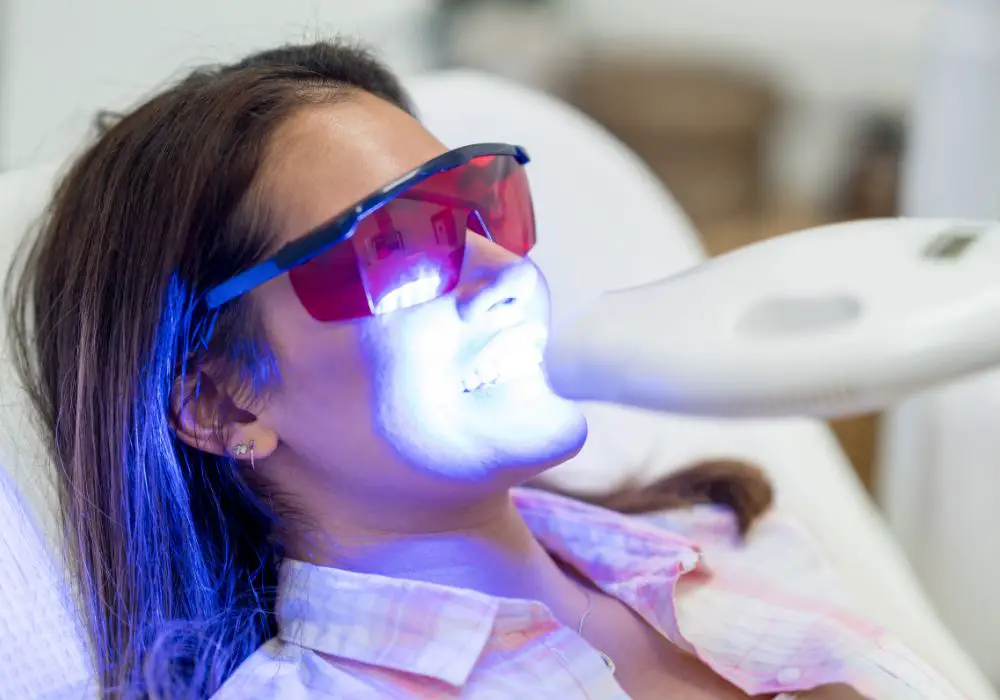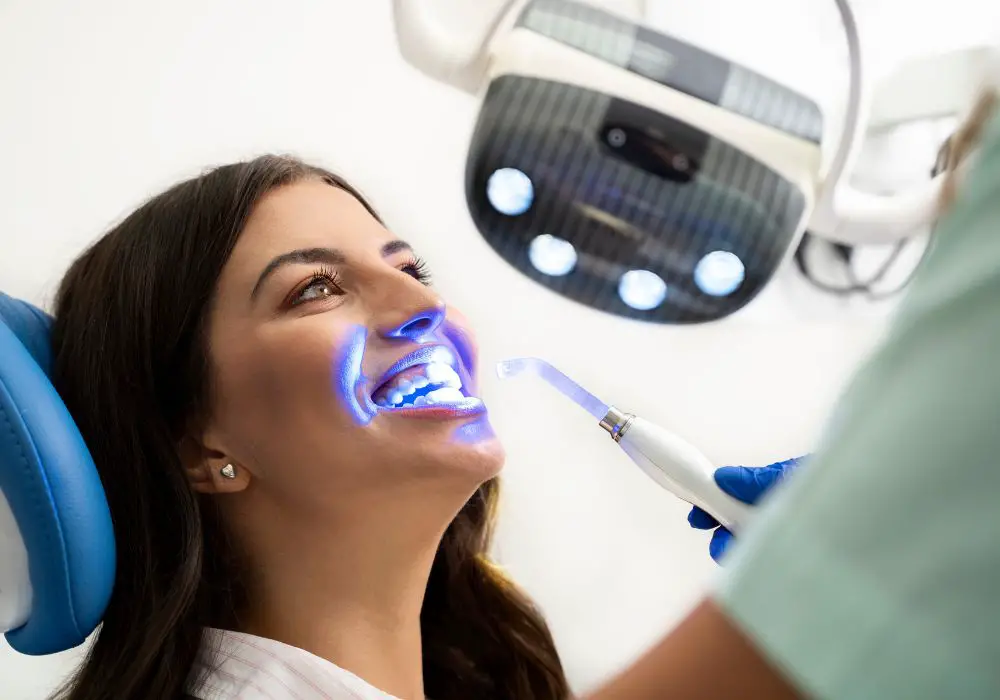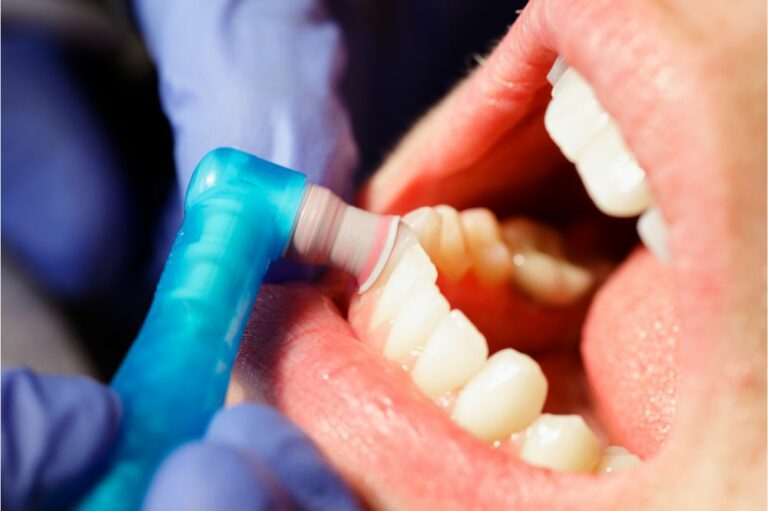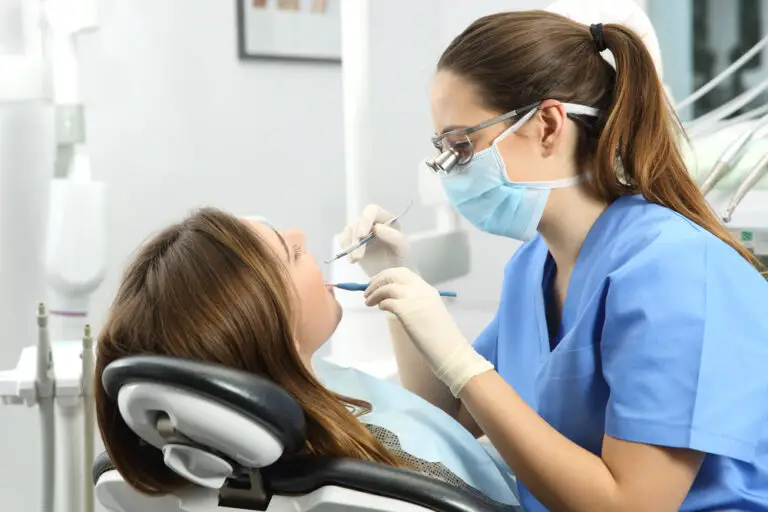The Dangers of Overusing Teeth Whiteners
Bleaching your teeth can make your smile brighter, but doing it too often or incorrectly can actually damage your teeth. Many dentists recommend limiting teeth whitening to once or twice per year to avoid side effects. Bleaching your teeth everyday could lead to a number of oral health issues:
Tooth Sensitivity
Whitening products contain peroxide, which helps break down stains on your enamel. However, peroxide can also seep through microscopic pores in the enamel to irritate the nerves inside your teeth. This causes increased permeability in the dentin and short, sharp pains when eating or drinking hot, cold, or sweet foods. The tingling and pain normally goes away within a few days after stopping treatment. But overusing whitening makes tooth sensitivity much more likely, sometimes leading to prolonged discomfort.
Thinning Enamel
Enamel is the hard, protective outer layer of your teeth. It is naturally semi-translucent and pores allow some staining molecules to become trapped inside over time. Frequent bleaching can wear down and erode the enamel surface. This thins the enamel layer, making teeth look more yellow as the darker dentin underneath shows through. Thinned enamel is also weaker structurally and more prone to cracking and decay.
Gum Irritation
Whitening gel should only be applied directly to the tooth enamel. However, some people may spread the product onto the gums by mistake. The resulting chemical burn can cause significant gum inflammation, recession, and loss of tissue. This exposes more of the tooth surfaces, including the root. Unprotected roots can become hypersensitive to hot and cold. Excessive gum recession also has negative cosmetic effects.
Destruction of Tooth Structure
In the most severe cases of overbleaching, the peroxide can permanently disrupt the crystalline calcium phosphate structure of enamel and dentin. This reduces mineral content in these tooth layers, making teeth more brittle and prone to cavities, fractures, and painful sensitivity. The accumulation of small structural changes from frequent bleaching could necessitate crowns or veneers to restore strength.
Safer Ways to Whiten Your Teeth

You don’t need to bleach your teeth daily to get a brighter smile. Here are some safer alternatives:
- Get professional in-office whitening at your dentist’s office once or twice per year. These treatments use higher peroxide concentrations under supervision to produce dramatic results quickly.
- Use custom-fitted or over-the-counter whitening trays with peroxide gel for 1-2 weeks at a time, once or twice per year. Carefully follow instructions for application time and frequency.
- Brush with a whitening toothpaste containing mild polishing ingredients or low levels of hydrogen peroxide daily. Look for ADA-approved products.
- Use other peroxide-based whitening products very sparingly. Whitening mouthwashes and toothpastes can provide touch-up bleaching between treatments.
- Remove stains manually through brushing, flossing, and professional cleanings. Physical removal of tartar and surface stains is gentler than bleaching.
When Is It Safe to Whiten Daily?
In general, daily bleaching is not recommended by dentists. However, there are a few exceptions:
- If you are using a very low concentration hydrogen peroxide gel (3% or less), it may be safe for daily use. However, enamel damage can still occur over time with prolonged exposure.
- Non-peroxide whitening formulas may be gentle enough for daily use if they contain ingredients like baking soda, activated charcoal, or fruit enzymes. Carefully monitor for sensitivity or gum irritation.
- If you have severe intrinsic tooth discoloration, your dentist may recommend using custom fitted bleaching trays filled with a 10-15% peroxide gel at home for 2 weeks or longer until desired shade is reached.
In any case, consult with your dentist before beginning intensive whitening regimens. Get regular dental exams to check for enamel issues. And take occasional breaks from bleaching to allow your enamel to reharden and recover.
How Does Teeth Whitening Work?

To understand the effects of bleaching agents, it helps to first look at tooth anatomy and how stains form:
Tooth Anatomy
Teeth have three main layers:
- Enamel – The hard, translucent outer surface made of crystalline calcium phosphate. Enamel is naturally porous.
- Dentin – Softer layer under enamel containing nerves and darker, more yellow dentin material.
- Pulp – Innermost layer containing blood vessels and nerves.
Causes of Discoloration
Stains form inside microscopic grooves and pores of the enamel layer when pigment molecules become trapped. Common causes of extrinsic and intrinsic staining include:
- Foods and drinks like coffee, tea, red wine, dark sodas, and berries
- Tobacco use from smoking or chewing
- Poor oral hygiene allowing plaque and tartar buildup
- Trauma causing internal bleeding beneath the enamel
- Medications like tetracycline during tooth formation
- Fluorosis and other enamel developmental conditions
- Aging as enamel thins and dentin shows through more
Bleaching Process
Whitening products use carbamide peroxide or hydrogen peroxide as the main active ingredient. When applied to the teeth, these peroxide formulations penetrate into the porous enamel layer and dentin to reach the trapped stain molecules.
The peroxide acts as a strong oxidizing agent that breaks apart large pigmented molecules through a chemical reaction. This essentially destroys the double bonds that keep stains firmly lodged inside the microscopic enamel pores. Breaking these bonds lightens tooth color by releasing the small, colorless particles.
However, very high or prolonged concentrations of peroxide can also damage enamel matrices and dentin over time.
Whitening Methods Compared
| Method | Description | Hydrogen Peroxide Concentration | Duration | Results |
|---|---|---|---|---|
| In-Office Bleaching | Performed in dentist’s office using specialized light and concentrated peroxide gel. | 15-40% | 30-90 minutes | Up to 8 shades whiter |
| Dentist-Prescribed Trays | Custom fitted trays filled with bleaching gel from dentist. Worn at home for a few hours per day. | 10-15% | 1-2 weeks | Up to 8 shades whiter |
| Over-the-Counter Trays | Boil-and-bite trays or stock trays filled with gel. Less customization. | 3-10% | Several hours per day for 1-2 weeks. | 2-6 shades whiter |
| Whitening Strips | Thin strips coated with whitening gel. Adheres directly to teeth. | 5-14% | 30 minutes per day for 1-2 weeks. | 2-6 shades whiter |
| Toothpastes | Whitening toothpastes contain mild abrasives and low levels of hydrogen peroxide or similar bleaching ingredients. | 0-3% | Twice daily brushing. | 1-2 shades whiter |
| Rinses | Whitening mouthwashes contain lower peroxide concentrations that contact teeth for a short time. | 1-3% | Once or twice daily use. | 1-2 shades whiter |
As shown above, in-office and custom tray methods use higher peroxide concentrations applied directly to teeth for dramatic whitening. Over-the-counter products use lower concentrations but offer more convenience and gradual lightening over weeks of use.
Frequently Asked Questions
Is it bad or dangerous to bleach your teeth everyday?
Yes, bleaching your teeth daily is generally ill-advised because it can damage the enamel over time. Whitening more than twice per year risks increased tooth sensitivity, enamel thinning, gum recession, and other issues.
Can I brush my teeth immediately after bleaching?
It’s best to wait at least 1 hour after bleaching before brushing. The enamel surface remains porous and demineralized temporarily after treatment. Brushing too soon can scratch this softened enamel.
How long do teeth whitening results last?
In-office and custom tray methods can whiten teeth dramatically up to 8 shades with results lasting 1-3 years. Over-the-counter methods lighten 2-6 shades and last 6-12 months. Without periodic touch-ups, stains gradually return over time.
Does activated charcoal powder actually whiten teeth?
Activated charcoal can help remove some minor surface stains by gently polishing the enamel. However, it is too abrasive for daily long-term use and won’t penetrate deep stains. Use occasionally for polishing, not true bleaching.
Is baking soda safe and effective for teeth whitening?
Yes, baking soda can lightly brighten and polish teeth 2-3 shades thanks to its mild abrasive properties and slight bleaching effects. Much gentler than peroxide, baking soda can be used in toothpaste or made into a paste with water for occasional cleaning.
In summary, bleaching your teeth every day is not recommended by dentists. Occasional use of peroxide whiteners combined with dental cleanings, brushing, and avoiding heavily staining foods and drinks can safely keep your smile brighter. Consult your dentist to find the whitening options that best match your needs and expectations.







